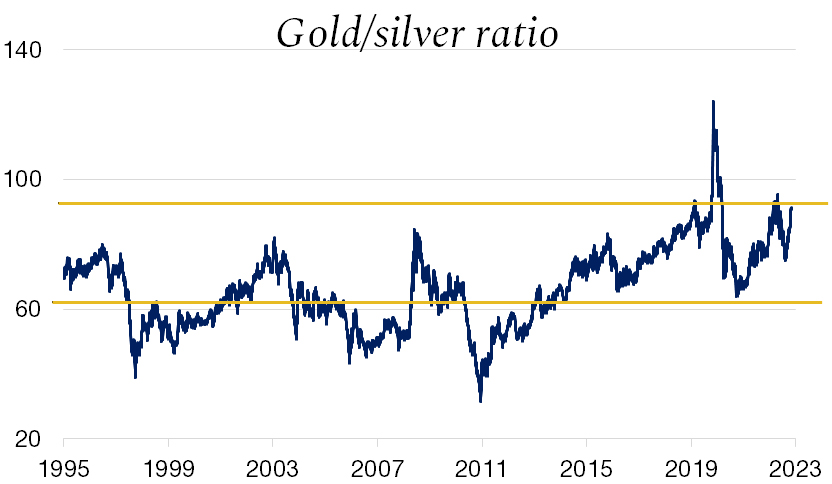13/03/2023
Flash boursier
Key data
| USD/CHF | EUR/CHF | SMI | EURO STOXX 50 | DAX 30 | CAC 40 | FTSE 100 | S&P 500 | NASDAQ | NIKKEI | MSCI Emerging Markets | |
| Latest | 0.92 | 0.98 | 10'765.26 | 4'229.53 | 15'427.97 | 7'220.67 | 7'748.35 | 3'861.59 | 11'138.89 | 28'143.97 | 955.28 |
| Trend | |||||||||||
| YTD | -0.35% | -0.98% | 0.33% | 11.49% | 10.80% | 11.54% | 3.98% | 0.58% | 6.42% | 7.85% | -0.12% |
(values from the Friday preceding publication)
Risk aversion rises
Markets corrected last week following the Fed chair’s outlook on inflation and the possibility of tightening further if necessary. The collapse of SVB Bank, which amongst other things financed cryptocurrency start-ups in the US, is weighing down banking stocks and sending risk aversion sharply higher.
In response, bond yields have fallen sharply, with the US 10-year yield at 3.70% and the German equivalent at 2.5%.
The US economy added more jobs than expected in February, which could lead the Fed to raise interest rates more than expected even as wage growth shows signs of easing. The private sector added 242,000 jobs, compared with a forecast of 200,000. Non-farm payrolls slowed to 311,000, but this was not as sharply as expected. The latest weekly round of initial jobless claims rose by 21,000 to 211,000 from 190,000 the previous week.
Inflation in Europe is not abating. The rise in the consumer price index continued in February, with Germany reporting a figure of 9.3% year-on-year. Gas prices (+46.6% yoy) continued to drive the price statistics upwards, followed by electricity (+23.1%) and food and beverages (+20.7%). Month on month, prices rose by 1%.
In contrast, household consumption fell by 0.9% in the fourth quarter, a sign of declining purchasing power as households postpone purchases in the face of reduced visibility.
The S&P 500 ended the week down 4.55% while the tech-heavy Nasdaq, more sensitive to interest rate expectations, was off by 4.71%. The Stoxx 600 Europe index dropped by 2.26%.
The main event this week is the ECB’s rate decision, where it is expected to raise rates by 50bp for the third time in a row amid persistent inflation.
Silver or gold?
The silver market tends to move in tandem with gold. At the same time, it is more volatile because silver is used in many industries including electronics, solar panels, automotive and healthcare.
The potential of silver is underpinned by the growing demand from these sectors, as well as the traditional investor demand for the asset as a hedge against inflation and economic ups and downs.
At present, the gold/silver ratio (see chart) suggests that silver is undervalued relative to gold, which could spell investment opportunities.
However, while the markets for both precious metals have a number of risks in common, such as interest rate fluctuations, trade and geopolitical tensions and monetary policy, silver has historically been more sensitive to economic conditions.
The prospect of a slowdown in the global economy combined with anti-inflationary monetary policies could – despite the current attractive levels for silver – still favour gold, whose safe-haven status is much more established, as seen recently during the pandemic.
Under these conditions, gold retains pride of place in portfolios despite the current attractiveness of silver, but gold will not be immune to rotation in the event of renewed economic growth.



 Flash boursier
Flash boursier